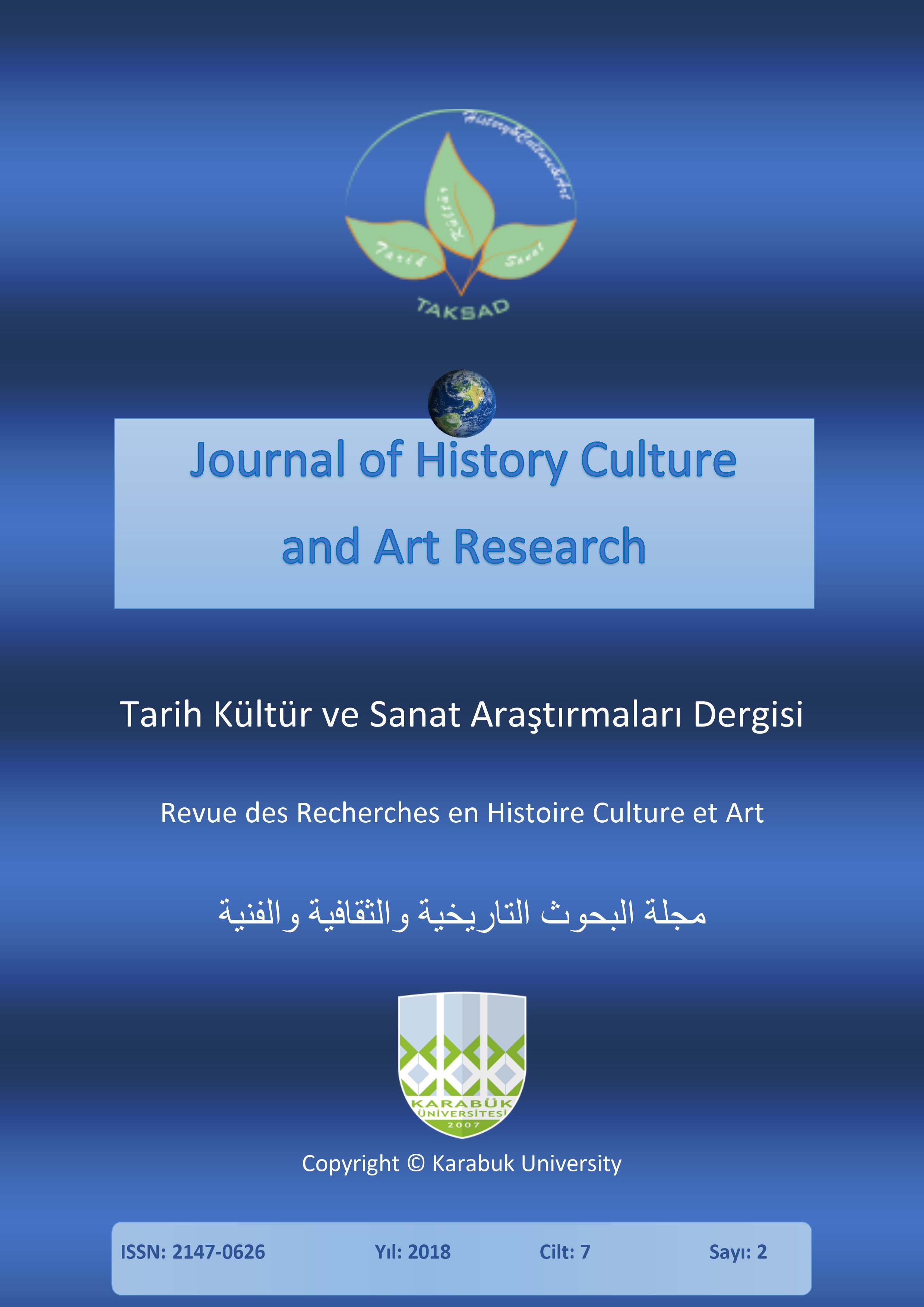Early Modern Russian State, "Tsar’s Discourse" and Russian Orthodox Church in the XV-XVII Centuries
DOI:
https://doi.org/10.7596/taksad.v7i2.1606Keywords:
Late Medieval Period, Early modern Period, Early Modern State, Russia, The Orthodox Church.Abstract
The article examines some special aspects of the centralized Russian state formation as the part of the Pan - European process of the early modern state formation. The researchers focus on the problem of the Tsar’s discourse as on the problem of the total claims the true Orthodox monarch should comply with. The Orthodox Church took the active part in the formation of this "discourse", and the compliance with the requirements of it guaranteed to the top authority loyalty of its people and readiness to carry out its requirements. The Church gave Grand Dukes the powerful tool when applying secular practices of legitimation.
References
Elliott, J. H. (1992). A Europe of Composite Monarchies. Past & Present. Number 137. The Cultural and Political Construction of Europe: 48-71.
Filyushkin A. I. (n.d.). Charters of Novgorod bishop Feodosiy of the Diploma, devoted to the capture of Kazan. Hermeneutics of the old Russian literature. Issue 10. IWL RAS: 327-346.
Filyushkin A. I. (n.d.). The diplomas of the Novgorod bishop Feodosiy devoted to the Kazan capture. Hermeneutics of Old Russian literature. Collection 10. IMLI RAS: 327-346.
Izbornik (1969). Collection of literary works of Ancient Russia. M. Fiction: 627.
Joseph of Volotsk (2007). Messages. SPb., Academy of Sciences of the USSR publishing house: 392.
Koenigsberger, H. G. (1978). Monarchies and Parliaments in early modern Europe Dominium Regale or Dominium Politicum et Regale. Theory and Society. Vol. 5. 2: 191-217.
Kollmann N. S. (2012). Crime and Punishment in early modern Russia. Cambridge, Cambridge University Press: 504.
Maximus the Greek (1860). Compositions. T. 2. Kazan. Kazan spiritual academy: 460.
Mikhaylova. I. B. (2010). And here all kingdoms met … St. Petersburg. Dmitry Bulanin: 648.
Penskoy, V. V. (2012). Belgorod State University Scientific Bulletin. Series History. Politology. Economics <https://www.bsu.edu.ru/bsu/science/bsu-science-journal-en/list.php?SECTION_ID=6463>.Computer Science. No. 13 (132). 2012. Issue 23. BSU publishing house.
Penskoy, V. V. (2015). "On his own on the matter of the Tsar and the Zemstvo..." ("On the on business monarchic and on territorial …"). The research result. Publishing series: Social studies and humanities. 2015. V1, S. 4(6). 70-75: Reference date 03.12.2017. http://rrhumanities.ru/media/humanities/2015/4/Penskoy_recenziya.pdf
Pinsk V. V. (2012). Scientific sheets of the Belgorod state university. History series, Political science. Economy. Informatics. No. 13 (132). 2012. Issue 23. Belgorod: Publishing house of BELGU, 2012: 82-88.
Pinsk, V. V. (2015). "On the on business monarchic and on territorial …". Scientific result: Network scientific and practical magazine. It is gray. Social and humanitarian researches. 2015. T. 1, issue 4 (6). 70-75: Date of the last address 03.12.2017. <http://rrhumanities.ru/media/humanities/2015/4/Penskoy_recenziya.pdf>
Pinsk, V. V. (2015). Saint or "Erbfeind gantzer christenheit"? Ivan the Terrible and his era: image and reality. Scientific result. Social and humanitarian researches. 2015. No. 3(5): 110-125. Date of the last address 03.12.2017. <http://rrhumanities.ru/media/humanities/2015/3/Penskoy_Ivan_Grozny.pdf>
Sinitsyna N. V. (1998). The Third Rome. Origins and Evolution of Russian medieval concept (the XV-XVI centuries). M. Sources and evolution of the Russian medieval concept (the XV-XVI centuries). Indrik m: 415.
Downloads
Published
How to Cite
Issue
Section
License
All papers licensed under Creative Commons 4.0 CC-BY.- Share — copy and redistribute the material in any medium or format
- Adapt — remix, transform, and build upon the material for any purpose, even commercially.
Under the following terms:
Attribution — You must give appropriate credit, provide a link to the license, and indicate if changes were made. You may do so in any reasonable manner, but not in any way that suggests the licensor endorses you or your use.
- No additional restrictions — You may not apply legal terms or technological measures that legally restrict others from doing anything the license permits.







